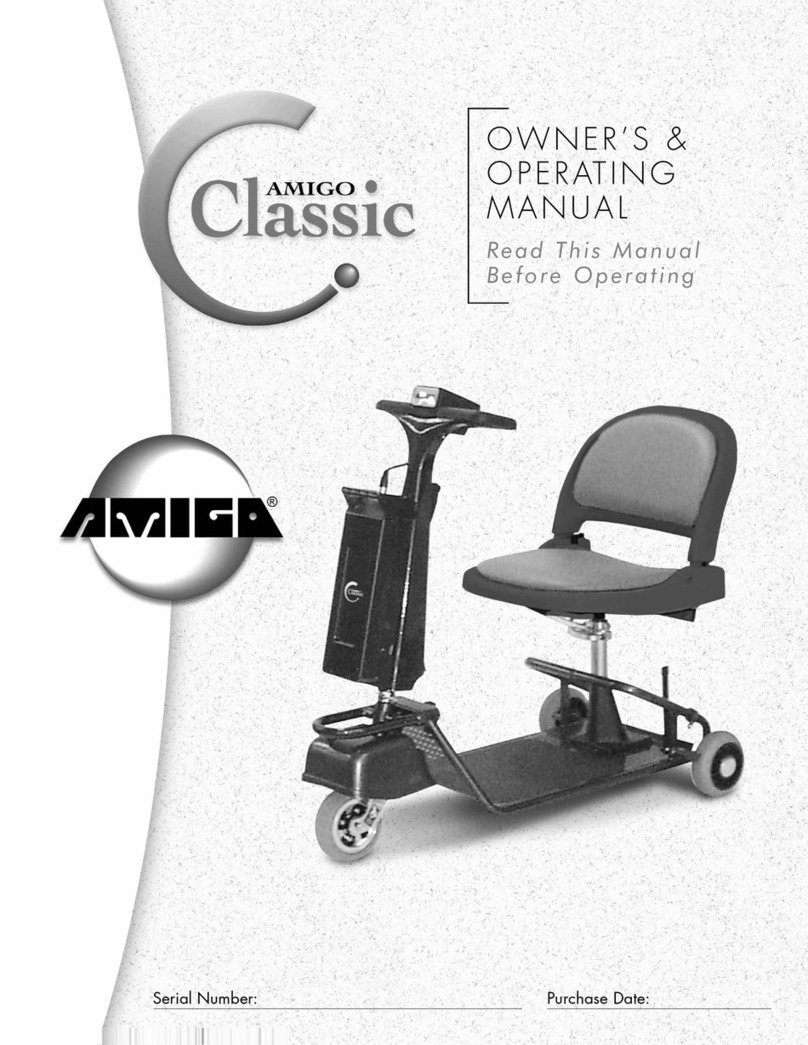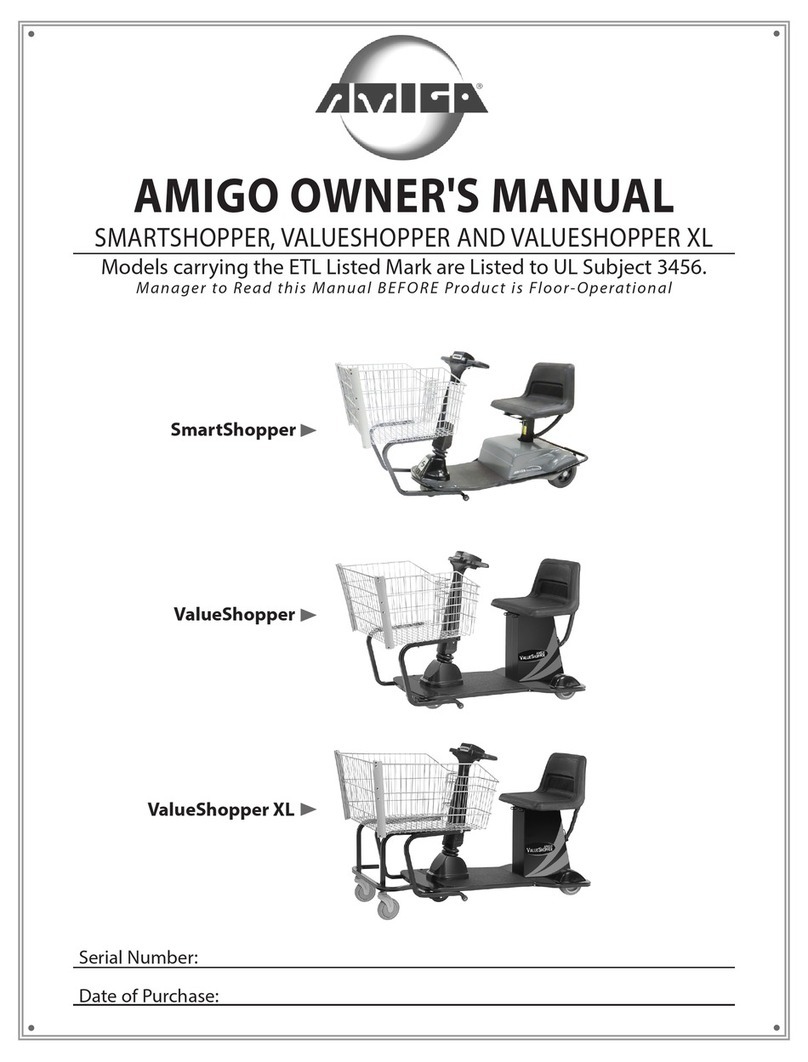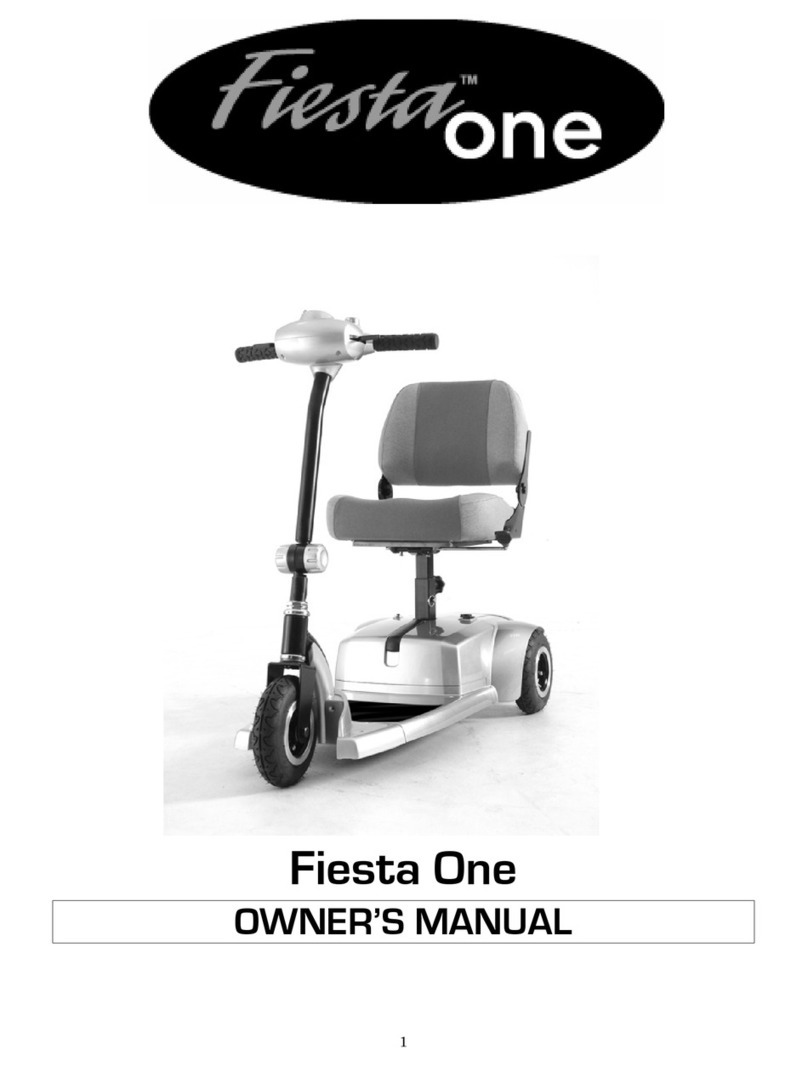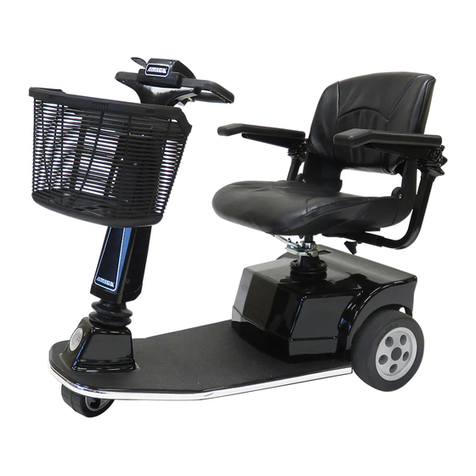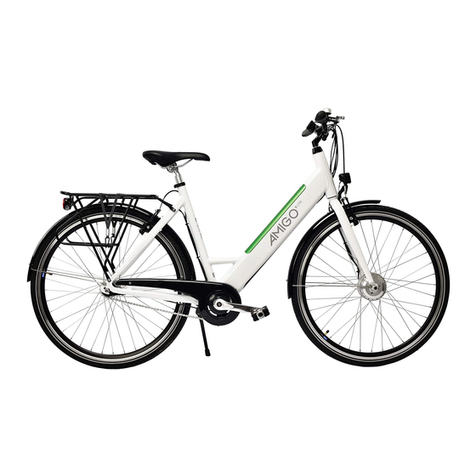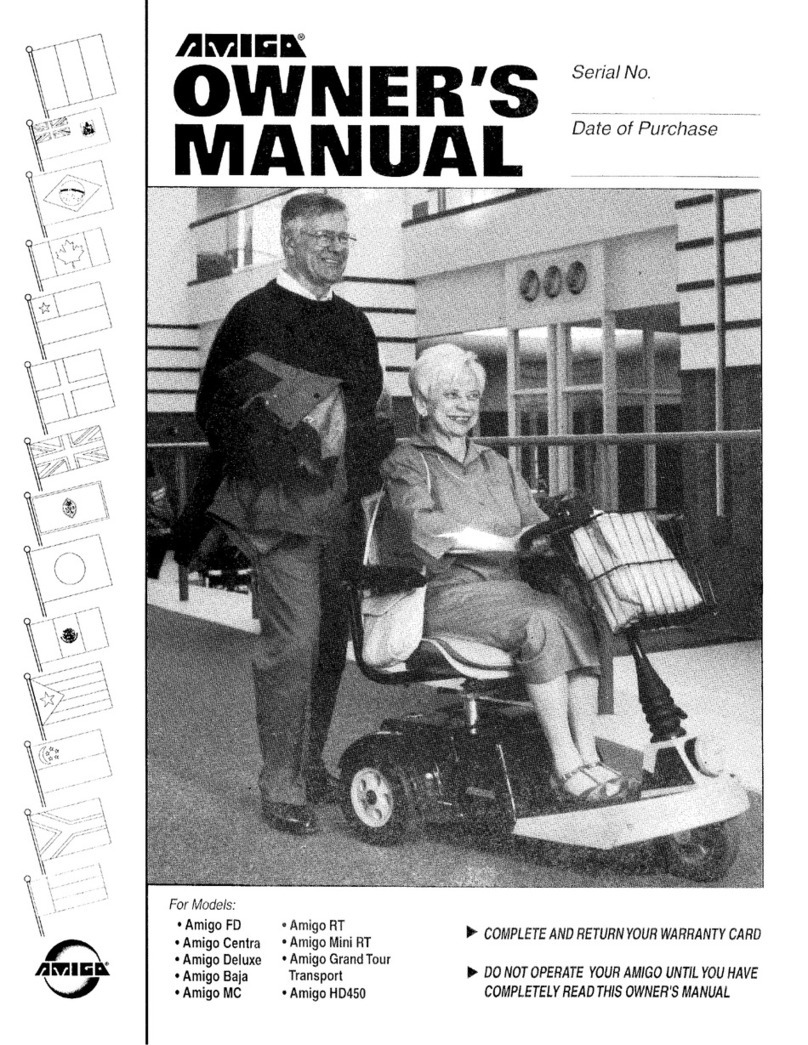
Power Seat Lift Operation (Optional)
To operate the power seat lift on Amigo models with a TouchTron handle,
press the seat/directional arrow buttons to raise or lower the seat (Figure 11).
To lift the seat to desired height, press the seat button with the arrow pointing
up. To lower the seat, press the seat button with the arrow pointing down. The
power seat lift can be activated only when you are not moving. Always drive
with the power seat lift in its lowest position.
TO AVOID DAMAGING THE MOTOR OF THE POWER SEAT LIFT,
RELEASE THE SEAT BUTTON AFTER THE SEAT HAS REACHED ITS
HIGHEST OR LOWEST POINT.
High Intensity Light Package Operation (Optional)
The optional lighting package available with the TouchTron handle includes a front headlight, rear taillights and turn signals. The
power must be on to operate the headlight or taillights. The headlight and taillights can be activated by pressing the headlight
button (Figure 11). Press this button again to turn the lights off.
The turn signals can be activated by pressing the left or right turn indicator buttons (Figure 11). Indicate a “hazard” condition by
pressing both turn indicator buttons. The power must be on to operate the lights.
RIDING YOUR AMIGO
Basic Driving
Be sure you are on a level surface. Once seated, for safe transfer or driving, push seat lock lever (located under seat) forward to easily
position the seat as needed. Engage lever back to the locked position.
• Make sure you are properly seated and insert key into key switch and turn counterclockwise to the ON position.
• Ensure the speed adjustment gauge is at the lowest setting. Note that reverse movement of vehicle may not occur with speed
adjustment at lowest setting.
• On handle, gently pull the accelerator lever as described earlier. You will gently accelerate. The further you pull the accelerator
lever, the faster you will go. Release the lever and you will gently stop. Reverse speed is slower than forward speed. Practice these
two basic functions until you get used to them.
• Steering the Amigo is easy and logical. Just be sure to remember to give wide clearance when turning so that the rear wheels
clear any obstacle.
• Shortcutting a sidewalk corner can cause the back wheel to go off the sidewalk. Avoid this at all times by steering an
exaggerated wide arc around the obstacle. If you must steer in a tight spot, such as entering a doorway or when turning around,
stop and then apply power gently. For more on maneuvering through obstacles, see the next section.
Driving Through Doorways
Approach an unfamiliar door slowly. Does it have a knob or push bar? Does it open toward or away? Think in terms of using the
power of the Amigo to do the work for you. Hold the doorknob or bar in one hand and apply the power with the other hand. If it
is a self-closing door, you can go through allowing the door to close behind you. If it is not a self-closing door, just stop when you
are clear of the door and push it closed. If the door opens toward you, hold the knob or bar with one hand and gently press on your
reverse accelerator lever and allow the gentle reverse power to do the work. When the door is open wide enough, pull the forward
accelerator lever to move forward, leaving your hand on the door to keep it free of the Amigo and letting go as you pass the door
jamb.
Driving on Ramps
With the ADA (Americans with Disabilities Act), buildings require ramps for POV (power-operated vehicle) access. Some have U-turns
in the middle where good cornering is required. Take wide swings with your front wheels around any tight corners so the rear wheels
follow a wide arc to stay clear of the corner. When you have stopped while facing uphill, starting up again simply requires that you
apply forward power. Accelerate gently after stopping on an incline. When proceeding up a ramp or curb, lean forward in your seat
for maximum stability and safety. Going down any ramp or hill, drive slowly to ensure a safe descent.
Driving Over Grass, Gravel and Grades
The Amigo performs admirably in grass, gravel and on hills, but you must NOT exceed the parameters set down in this manual.
Please refer to the safety suggestions for use. Safety must come first. If you are unsure about any situation, avoid it. Common sense
is your best protection. Always act with caution. Feel free to use your Amigo on lawns or in park areas. Avoid long unkempt grass;
otherwise just follow the safety suggestions.
Figure 11
Headlight/
taillights
Turn
indicators
www.myamigo.com 7
DownUp
